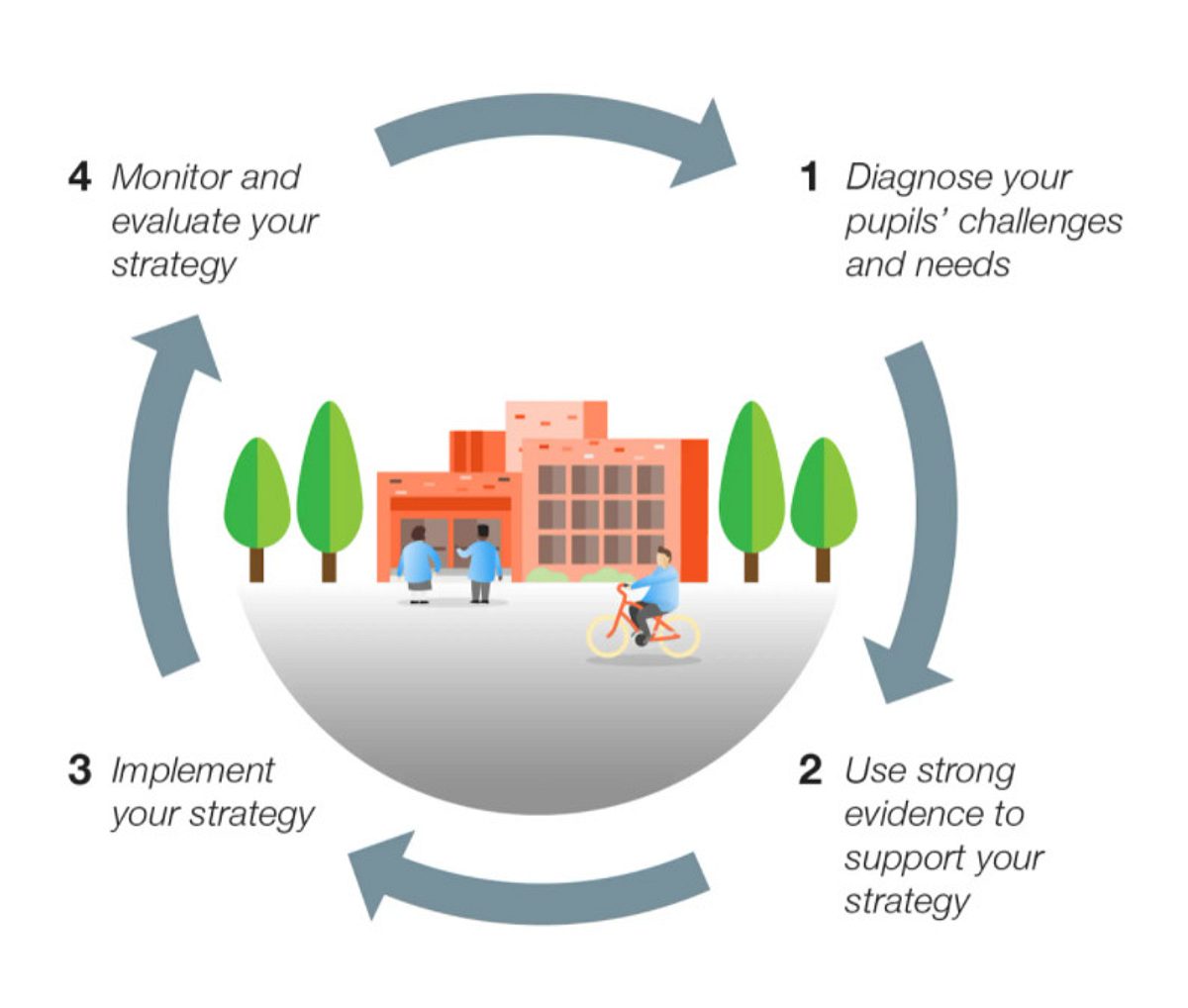Andy Samways, Director of Teaching School Hub and Research School at Unity Schools Partnership will be leading a workshop and roundtable session focused on secondary education at the 2022 Pupil Premium Conference.
Ahead of the day, take a look at this blog from Unity Schools Partnership to explore some helpful resources for effective Pupil Premium use in your school or trust.
Research has found that disadvantaged pupils have been worst affected by the impact of the pandemic. It is therefore more important than ever that school strategies focus on support for disadvantaged pupils.
Busy school leaders can be reassured in utilising two essential resources in order to support the development and implementation of their pupil premium strategy:
#1: The EEF’S updated Pupil Premium Guide
This practical guide is designed to support schools in developing their pupil premium strategy to ensure that it is based on the best evidence, and meets updated DfE requirements. Published earlier this month, it follows and complements, the publication of a new pupil premium reporting template from the Department for Education (see #2 below), which requires schools to demonstrate they have considered evidence when developing their pupil premium strategy. The guide builds on the EEF’s tiered approach to pupil premium spending, which encourages schools to consider three core pillars:
- Improving teaching: This might include professional development, training and support for early career teachers, as well as teacher recruitment and retention.
- Targeted academic support: Evidence consistently shows the impact that one-to-one and small group interventions can have on pupils who are falling behind.
- Wider strategies to overcome non-academic barriers to learning: This might include strategies to boost attendance, improve behaviour or provide social and emotional support.
It also offers a new four step model, to support schools in formulating and sustaining a long-term pupil premium strategy. This encourages school leaders to:
- Diagnose their pupil’s needs;
- Use strong evidence to support their strategy;
- Implement their strategy with care; and
- Monitor and evaluate its success.

#2: DfE Pupil Premium Guidance and templates for school leaders
This helpful guidance and associated templates outlines steps for school leaders in order to plan and evidence the effective use the pupil premium (and recovery premium in the 2021 to 2022 academic year) to improve the attainment of your disadvantaged pupils. The disproportionately high impact of COVID-19 on the education of disadvantaged pupils makes this more important than ever.
For 2021 to 2022, all schools are required to:
- use their recovery premium alongside their pupil premium funding and report on their use of them as a single sum in a strategy statement
- demonstrate how spending decisions are informed by a range of evidence
The new templates provided by the DfE utilise the four-step cycle from the EEF Pupil Premium Guide (as above) and add a further two stages to the process of developing and delivering an effective strategy.
1. Identify the specific challenges faced by your disadvantaged and vulnerable pupils
Diagnostic assessment is crucial for understanding the specific elements of education that pupils are finding challenging, rather than performance in whole subjects. The EEF’s diagnostic assessment resource is very useful scaffold for this. When identifying challenges, it is important to be drawing on a range of data sources including discussions with teachers and support staff and engagement with pupils and families.
It is vital that non-academic challenges that pupils are facing which might be negatively affecting their education and impact or their access to teaching are well understood, for example:
- attendance and levels of persistent absence
- behaviour incidences and exclusions data
- wellbeing, mental health and safeguarding concerns
- access to technology and educational materials high mobility
2. Create a strategy plan to address the key challenges
Three steers to consider include:
- consider taking a longer-term approach to the use of pupil premium funding. 3‑year plans are recommended
- the plan should focus on the controllable challenges that are having the most significant adverse impact on your disadvantaged pupils
- using a balanced structure to help map out your approach as supported by the tiered model within the EEF’s Pupil Premium Guide (as #1 above)
3. Use evidence to assess the merit of any activity that you consider implementing
Three steers to consider include:
- consult a wide range of independent, high-quality reviews of evidence, such as the evidence summaries published by EEF
- assess whether the evidence is based on a context relevant to your school
- consider how to be an effective consumer and challenge evidence claims made by external providers
4. Implement your plan
Three steers to consider include:
- how to integrate the activity with the curriculum including what changes will be needed to existing ways of working
- how to ensure all staff promote the principles and ethos of your strategy, such as high aspiration
- What data and resources will be required to monitor the impact of each activity
The EEF’s Putting Evidence to Work – A School’s Guide to Implementation provides extensive resource and guidance for reference.
5. Evaluate your strategy
Three steers to consider include when evaluating impact include:
- measure success based on outcomes for disadvantaged and vulnerable pupils
- implement a robust and transparent evaluation framework and report outcomes against this
- ensure evaluation is an ongoing process – strategies that have been effective in one year may not continue to be effective
6. Sustain your strategy
Three key messages include:
- the outcomes of your evaluation will inform your decision whether to sustain or stop each activity
- where a strategy is successful, it is particularly important to continue monitoring implementation
- recognising that disadvantage is dynamic so being informed by ongoing diagnosis of need and evaluation of impact will inform effective next steps
This blog was originally published by Unity Research School.
Join Andy and other leaders including Jean Gross, David Laws and Daniel Sobel at the Pupil Premium Conference 2022.